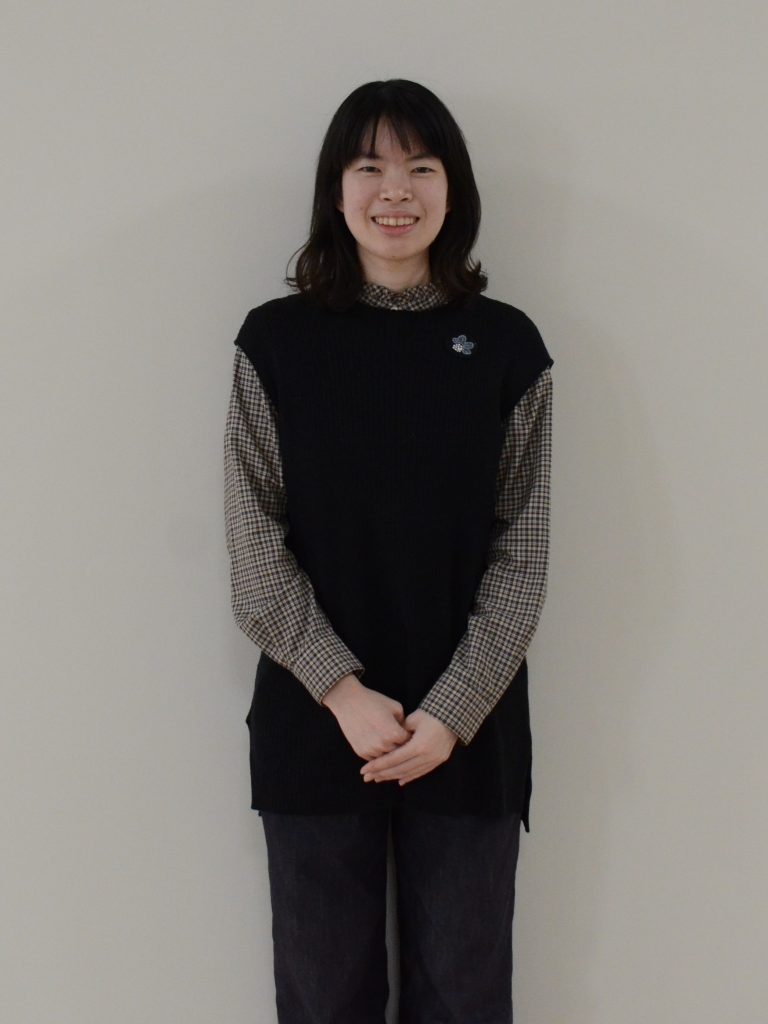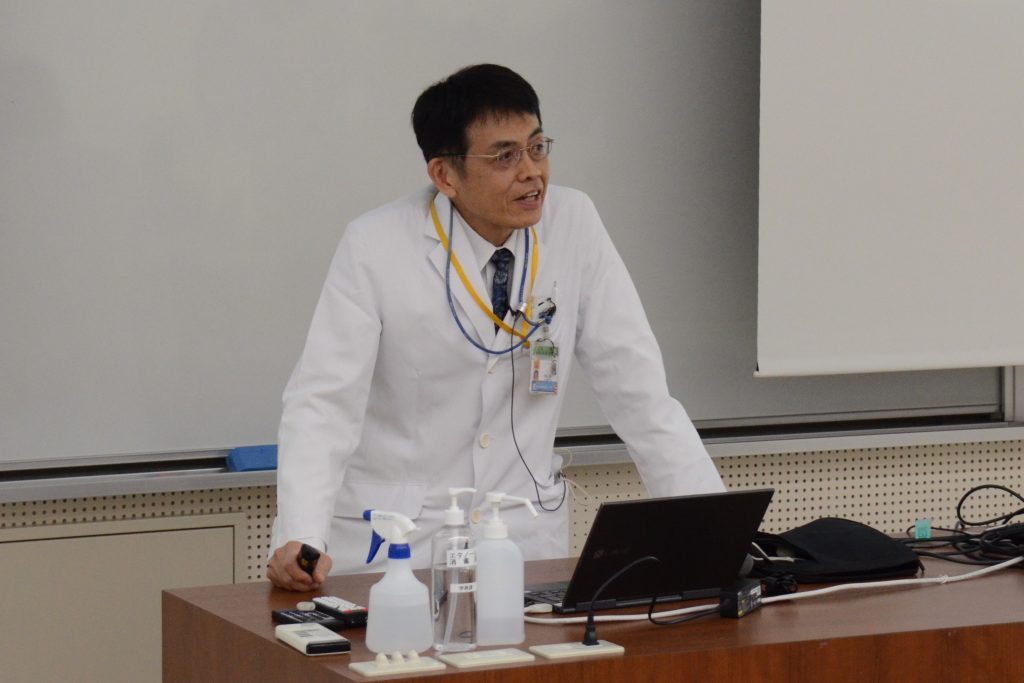The purpose of this class is to understand the role of physicians as members of patient-centered team medicine in the local medical field, to understand the nature, current status, and issues of community medicine, and to acquire the ability to contribute to community medicine.
Lesson Content
On the day of the interview, more than 10 minutes before the class started, many students were seated in the lecture room and the atmosphere was lively, but as soon as it was time to start, the instructor began answering and explaining the quiz from the previous class, and the students switched to class mode and quietly started checking materials on their individual computers and tablets. The students switched to class mode and began to quietly review the material on their individual computers and tablets. Writing was not done in paper notebooks, but directly on the tablets, which was a sign of the digitalization of the course.
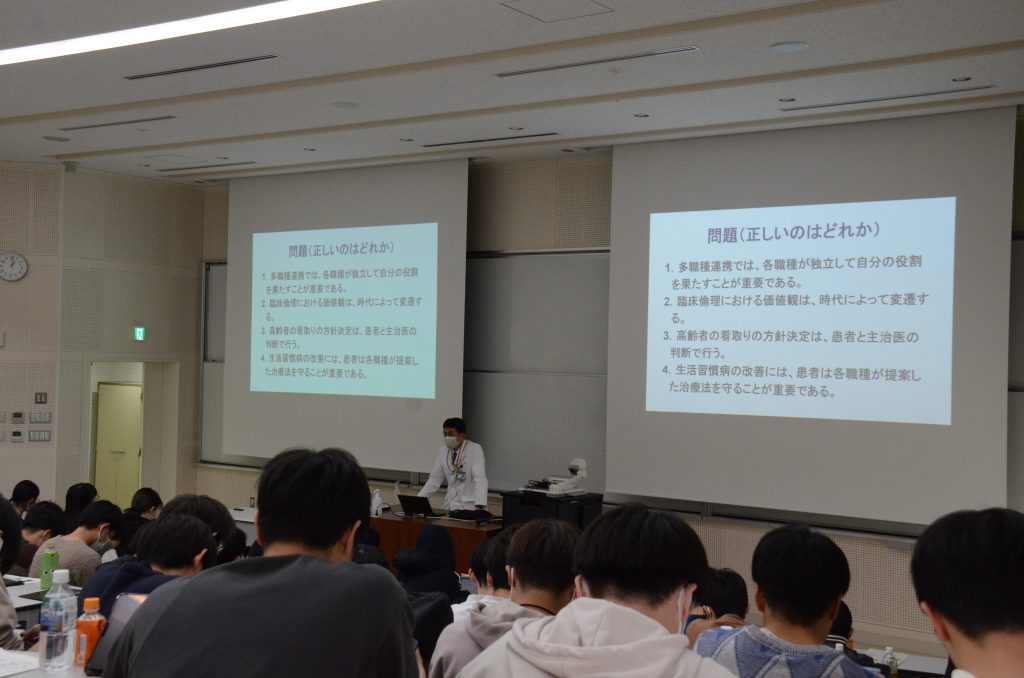
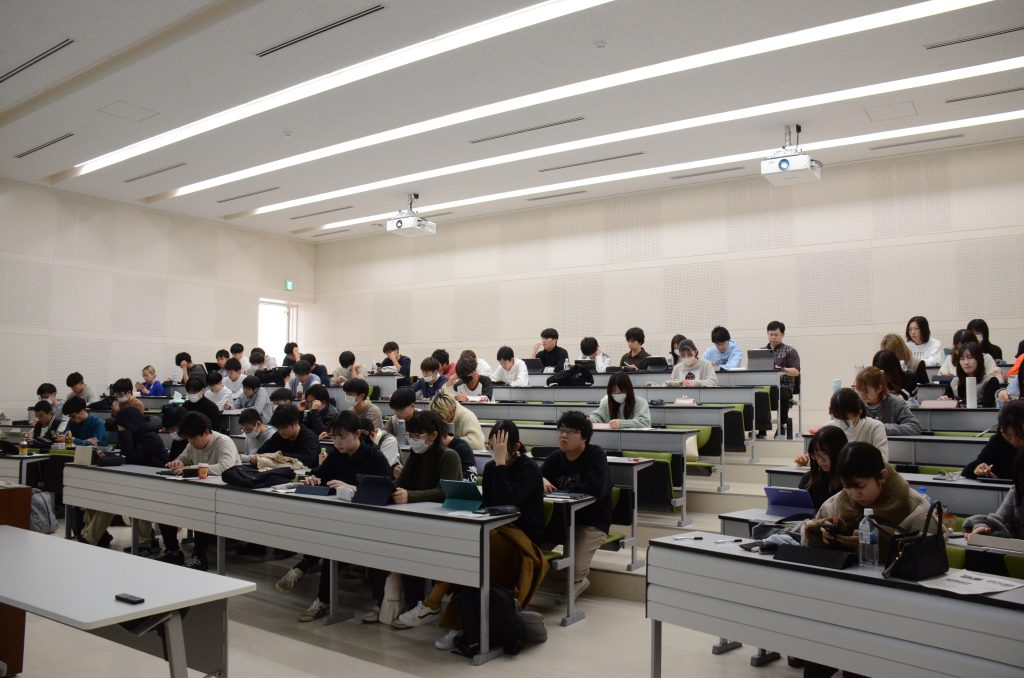
After reviewing the quiz, the day’s lecture on “Lifestyle-related Diseases and Behavior Change” began. Community medicine is defined as “activities to respond to all community needs, including insurance, medical care, and welfare, with a focus on health issues so that local residents can live with peace of mind,” and it was explained that there is a great need for doctors who can do this and that behavioral change is becoming important in these activities, and a specific explanation of behavioral change was given. He explained the importance of behavior change in these activities, and gave specific details about behavior change.
He said that behavior change is a change in a person’s behavior, and that in order to lead to a change in behavior, it is necessary to make specific suggestions that are suited to the individual, and that it is important to provide guidance while considering where the patient is in the stages of behavior change, such as “indifference phase,” “interest phase,” “preparation phase,” “execution phase,” and “maintenance phase,” and to tailor the talk to the individual patient. It is also important to give patients individualized advice.
As a specific example, obesity countermeasures were discussed, and instructional details such as “explaining the importance of exercise,” “watching reactions rather than threats,” “praising good points to encourage continuity,” and “changing the environment around you” were presented. One of the most successful examples of this was the effect of keeping a daily weight, which was explained by showing actual sheets to be filled out by many people.
In the class, the faculty also discussed various other factors that contribute to difficulties in improving one’s lifestyle, such as the instinct to “take it as easy as possible and eat good food,” superstition and tendency to believe that “people with worse lifestyle habits than oneself are healthy,” priority not to change one’s daily routine or not being able to change it, and a lack of a sense of crisis, such as “not being aware of or having any symptoms in the first place. The lecturers also talked about how to counter these factors and what they are practicing as physicians. The lecture was packed with easy-to-understand and convincing content, and is useful not only for those who aspire to become medical professionals, but also for the general public at large.
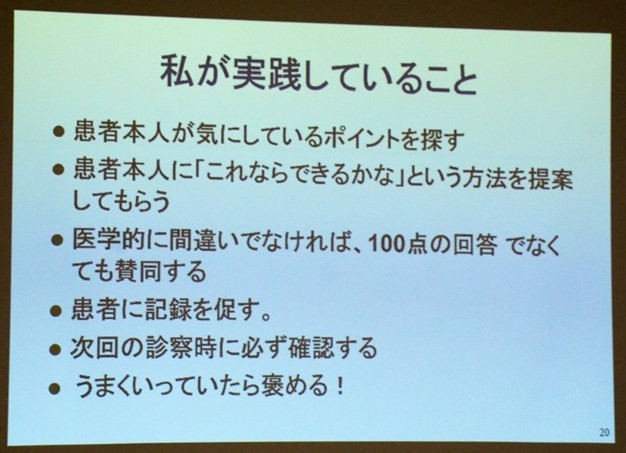
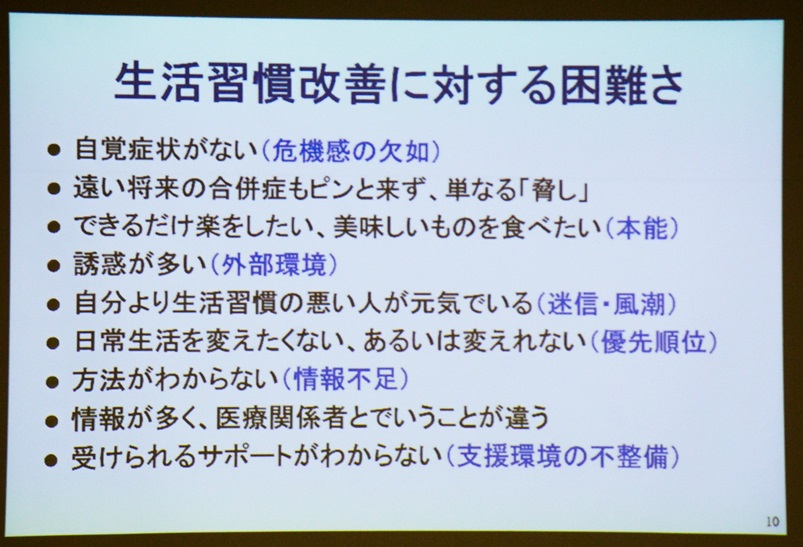
We hope that many students will be able to stay close to the community and contribute to community health care through this class.
Comments from faculty
Community medicine is considered to be “the study of activities related to various demands in the community, such as health, medical care, and welfare. Health issues surrounding the population have become increasingly diverse in recent years, including the super-aging of the population in the region, the accompanying increase in the complexity of diseases, the increase in the number of people requiring nursing care, and the increase in lifestyle-related diseases. Under these circumstances, the needs of residents in the community strongly demand not only medical treatment for diseases, but also a wide range of medical activities that take into account the family, workplace, and community.
The Department of Community Medicine was established as an endowed course by Ehime Prefecture for the purpose of enhancing community-based primary care education, research, and treatment. The lectures conducted by this course consist of the basics and practices in community medicine, and are designed to enable medical students who are going on to various fields to learn about the ideas and practices required in community medicine.
Lectures will be given on 25 topics (1 hour per session) and include primary care, patient-centered medicine, evidence-based medicine (EBM) and narrative-based medicine (NBM), multidisciplinary collaborative activities, clinical ethics, behavior change, preventive medicine, home care, end-of-life care, research in the community, and clinical reasoning in everyday illness.
These lectures are interdisciplinary and clearly different from other lectures. This is an essential learning experience, as many medical students will surely be engaged in community medicine after graduation and will be expected to contribute to the community.
Student Comments
In this lecture, you will learn what you need to know in order to work as a doctor in the community in the future. Community medicine covers a wide range of fields, from preventive medicine for the healthy life expectancy of the elderly to end-of-life care for those facing death, and requires collaboration not only with medical care providers but also with people in multiple professions, including health and welfare. Through this lecture, students will learn the difference between home medical care and medical care in hospitals, how to communicate with patients in a clinical setting, and how to collaborate with multiple professions to provide home medical care and end-of-life care. In addition, in community medicine, one doctor needs to have the ability to examine patients comprehensively. In order to consider what kind of diseases based on cases in lectures, students can learn practically how to interview patients and how to narrow down diseases. As the population ages and the demand for medical care in the community further increases, I think it is important for students to learn about community medicine from their student days.
